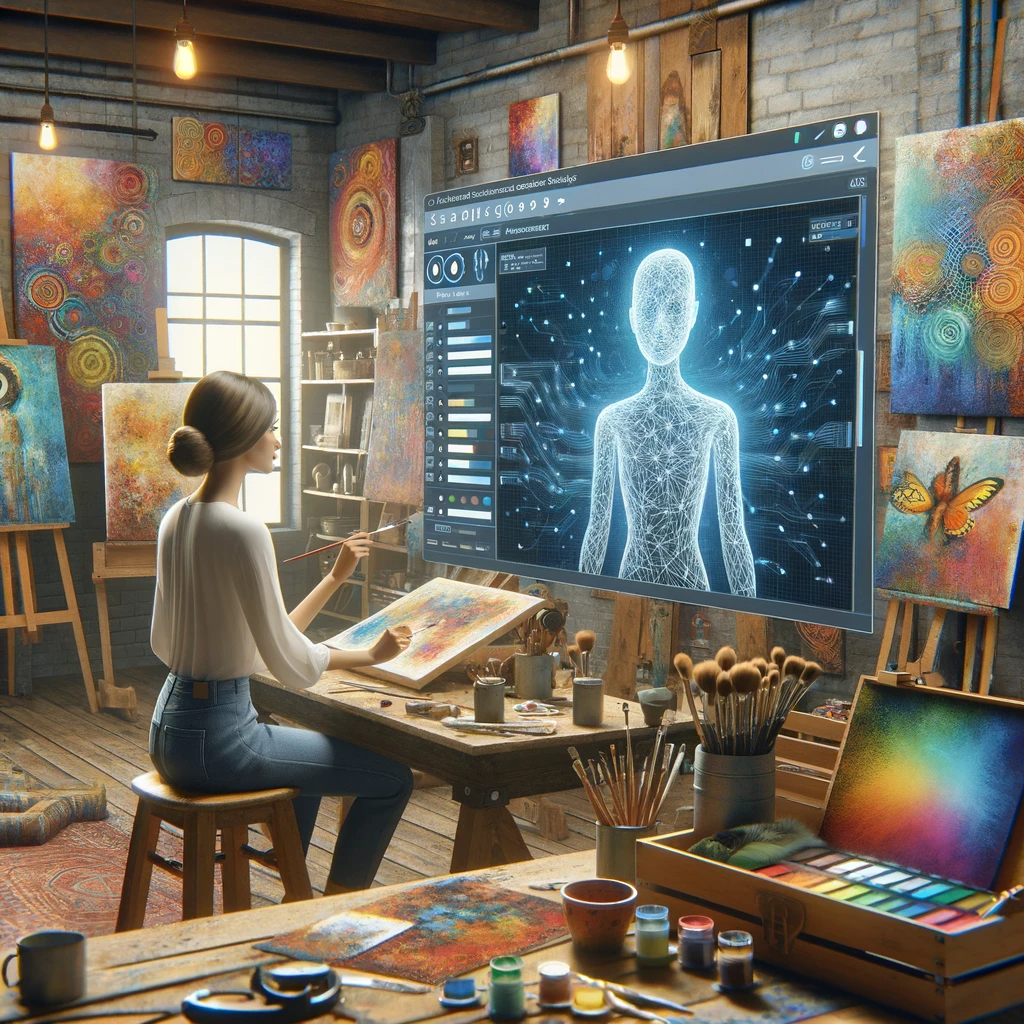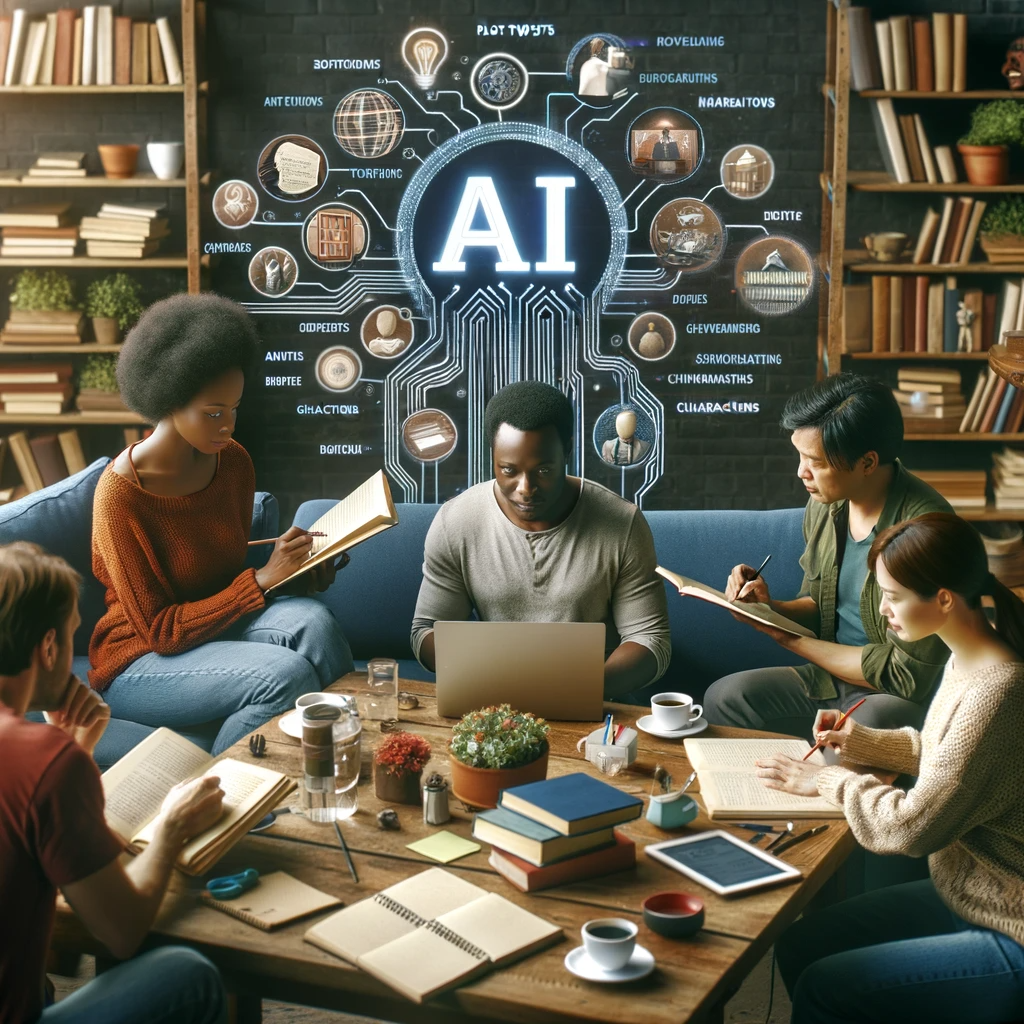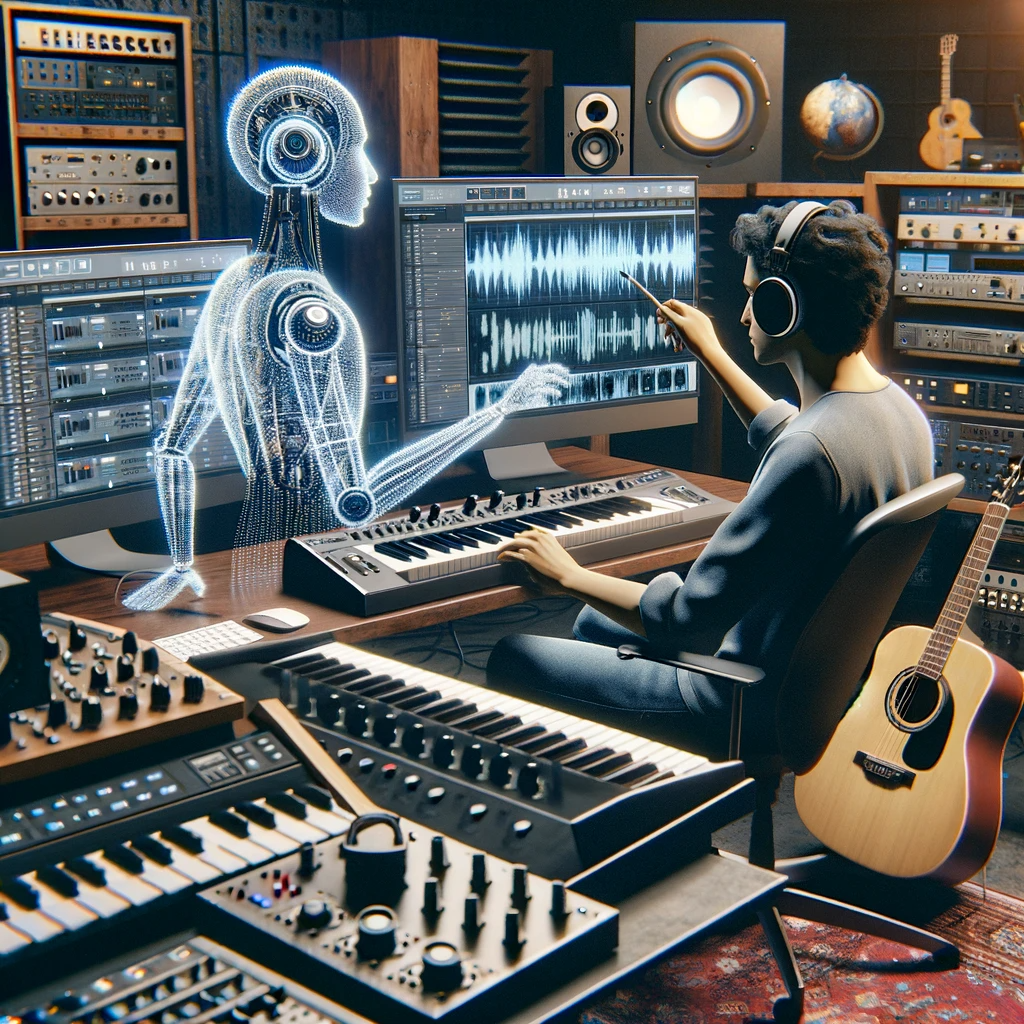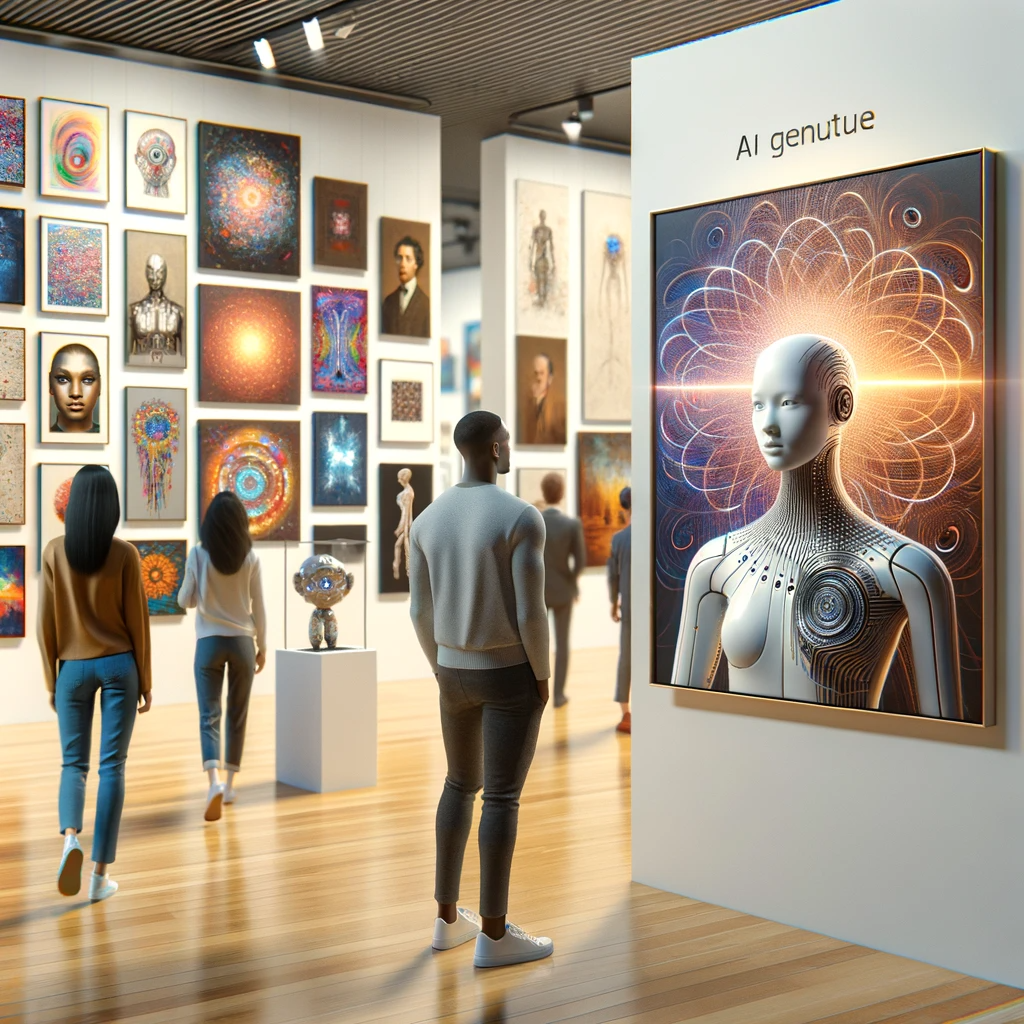In recent years, the burgeoning influence of Artificial Intelligence (AI) has extended beyond analytical and technical realms into the more subjective world of creativity. With advancements in machine learning and neural networks, AI has begun to leave its mark on various creative fields such as arts, music, writing, and design. These technologies, once primarily tools for computation and data analysis, are now composing symphonies, creating artworks, drafting literary pieces, and influencing design processes in ways that were once the sole purview of human minds.
This integration of AI into creative domains has sparked a fascinating debate about the nature and future of creativity itself. Central to this debate is a pivotal question: Does AI enhance or threaten human creativity? While some view AI as a tool that can augment human creativity, others fear it may usurp the very essence of what makes creativity inherently human.
This article aims to explore this complex and multifaceted issue by delving into several key areas. Firstly, we will examine AI’s current role in creative processes, showcasing how it is being used and the outcomes it’s producing. We will then investigate the nature of creativity in machines versus humans, questioning whether AI can truly possess creativity or if it merely mimics creative expressions based on algorithmic calculations. Finally, we will ponder the future of creative professions in this new AI era, considering how AI might reshape artistic careers, skill requirements, and the educational landscape. By navigating these discussions, we aim to provide a nuanced perspective on AI’s burgeoning role in the creative world and its implications for human creativity.

AI in the Realm of Creativity
The integration of Artificial Intelligence (AI) into the creative arts has opened a new chapter in the history of art, music, literature, and design. AI’s foray into these fields has been nothing short of revolutionary, showcasing its capability to not only assist but also independently produce creative works.
In the art world, AI has taken center stage with projects like Google’s DeepDream and other neural network-based technologies that create visually stunning pieces. These AI-generated artworks often result from deep learning algorithms processing vast datasets of existing art, learning stylistic elements, and then generating new creations. A landmark moment was the sale of an AI-generated portrait at Christie’s Auction House, signaling a significant acknowledgment of AI art.
Similarly, in music composition, AI systems have been developed to compose music in various genres. These systems analyze patterns in a vast array of music to learn styles and then generate new compositions. AIVA (Artificial Intelligence Virtual Artist), for instance, has been recognized by the music industry for creating symphonic pieces, showcasing AI’s ability to not just replicate but also innovate within the realm of music.
Content writing and journalism are other fields where AI’s influence is growing rapidly. Tools like GPT-3 have demonstrated an astonishing ability to write coherent and contextually relevant articles, stories, and even poetry. By processing extensive language databases, these AI writers can mimic writing styles and tones, producing content that is increasingly difficult to distinguish from human-written work.
AI’s role in design, particularly in fields like graphic design and architecture, is equally transformative. By employing generative algorithms, AI can propose design iterations faster than human designers, offering a range of possibilities that combine functionality with aesthetic appeal. This capability has been utilized in architectural design, where AI algorithms propose structures based on environmental data, usage patterns, and aesthetic principles.
The technologies powering these creative AI systems – pattern recognition, generative algorithms, and deep learning – are the backbone of this new creative revolution. AI’s ability to recognize patterns in data and generate outputs based on learned information is at the core of these technologies. For instance, generative adversarial networks (GANs) in visual art involve two neural networks contesting with each other to create new, original images that are indistinguishable from human-made art.
Instances where AI has contributed unique or innovative creations recognized by the creative community are steadily growing, challenging traditional notions of creativity. These instances not only showcase AI’s potential as a creative tool but also raise intriguing questions about the future of art and creativity in an AI-driven world. The integration of AI into creative fields is a testament to its versatility and its potential to redefine the boundaries of human creativity.
The Nature of Machine Creativity
At the heart of AI’s foray into creative fields is a fundamental question: Can AI truly be creative, or does it merely replicate patterns of human creativity? This debate touches on core concepts of originality, innovation, and the very essence of what it means to create.
To consider AI as genuinely creative, one must first define what creativity entails. Traditionally, creativity has been viewed as the ability to produce work that is both novel and appropriately useful or aesthetically pleasing. Human creativity is deeply intertwined with experiences, emotions, and consciousness, aspects that AI does not possess in the conventional sense. AI-driven creativity, on the other hand, hinges on its capacity to process and learn from vast datasets, identify patterns, and generate outputs that, while novel and often surprising, are essentially reconfigurations of existing data.
The originality of AI-generated works, therefore, becomes a contentious point. Can AI create something truly original, or are its outputs confined to the boundaries of its programming and training data? AI’s capability to generate art, music, or literature that has never been seen or heard before might suggest a form of originality. However, critics argue that since AI’s creations are rooted in pre-existing human-generated content, the element of originality is derived rather than innate. The question then arises: does the source of inspiration – whether from a human mind or an AI’s dataset – diminish the value or originality of the creation?
Another aspect of this debate revolves around the philosophical and cognitive dimensions of creativity. Human creativity is often fueled by a complex amalgamation of conscious and unconscious processes, emotional depths, and subjective experiences. It is not merely the production of something new but often involves a purpose, intention, or message – elements that AI does not inherently possess. When AI creates, it does so without understanding or intention, raising questions about the depth and meaning behind AI-generated works.
AI’s role in the creative process challenges our understanding of creativity itself. It prompts a re-evaluation of what constitutes creative acts and outputs, and whether the absence of consciousness or emotional intent in AI diminishes the value or categorization of its creations as ‘creative.’
In conclusion, the nature of machine creativity is a multifaceted and evolving debate. It compels us to revisit our definitions of creativity and originality and consider whether AI’s ability to generate novel and effective compositions constitutes true creativity or a sophisticated form of replication. As AI continues to advance and produce increasingly complex and unexpected outputs, it challenges us to expand our understanding of creativity, straddling the line between human artistic expression and machine-generated innovation.

Collaboration or Competition: AI and Human Creatives
The dynamic between AI and human creatives oscillates between collaboration and competition, offering a nuanced perspective on the future of creativity. While AI has significantly infiltrated the creative realm, its role can be seen both as a collaborative tool that enhances human creativity and a potential competitor that could supplant human roles in artistic professions.
In the sphere of collaboration, AI tools have been instrumental in augmenting the creative process for artists and creators. For instance, in music production, AI algorithms can analyze a musician’s style and suggest complementary melodies or harmonies, thus acting as a creative partner. Visual artists use AI to explore new aesthetic territories or to render complex designs, benefiting from AI’s ability to process large data sets and patterns quickly. AI is also used in writing and content creation, offering suggestions for plot development or language style, thereby enhancing the writer’s original ideas.
These collaborative endeavors often result in a symbiotic relationship where AI contributes to the creative process without diminishing the artist’s control or vision. A notable example is the AI program AIVA, which composes symphonic music used by human musicians. AIVA assists in the composition process but ultimately, the final piece is a fusion of AI capability and human musical artistry.
Despite these collaborative successes, there are concerns and fears among creatives about AI’s potential to replace human roles. In fields like graphic design and journalism, where AI can generate outputs at a remarkable speed, there is apprehension that AI might make certain human skills redundant. These concerns are not unfounded, as AI’s efficiency and ability to learn and replicate styles could lead to a preference for AI-generated content, particularly in areas where cost and speed are prioritized.
However, numerous case studies and examples suggest that AI is more effective as a tool for augmenting human creativity rather than replacing it. The interactive AI project ‘Deep Dream’ by Google, for instance, demonstrates how AI can be used to create intricate and abstract visual art, inspiring artists to explore new forms of digital expression. In literary fields, AI has been used to generate creative prompts and storylines, which authors then expand upon, using AI as a springboard for human creativity.
In conclusion, the relationship between AI and human creatives is multifaceted. While AI presents opportunities for enhancing the creative process, it also brings challenges and apprehensions about the future of creative professions. The key lies in leveraging AI as a tool that complements and elevates human creativity, ensuring that the essence of artistry remains a distinctly human endeavor.
The Future of Creativity in the AI Era
As AI technologies continue to evolve, they are set to reshape the landscape of creative fields in ways that are both exciting and challenging. The future trajectory of these fields suggests a transformation in how art is created, perceived, and valued. This evolution will likely have profound implications for education, skill sets, job opportunities in creative professions, and the broader ethical and societal context of AI-generated content.
In educational settings, there is a growing need to adapt curricula to include AI literacy and skills relevant to AI-augmented creativity. Traditional arts education may need to incorporate understanding AI tools and algorithms, as well as developing skills to collaborate effectively with AI. This integration could lead to new disciplines and specializations, blending technology and art in innovative ways. For aspiring artists, designers, and musicians, proficiency in AI tools could become as essential as traditional techniques.
The skill sets required in creative professions are likely to evolve with the increasing integration of AI. Artists and creators may need to become adept at not just their craft but also at guiding and collaborating with AI systems. This shift could open up new job opportunities focused on the intersection of AI and creativity, such as AI art directors or AI music producers. However, it may also render certain skills less in demand, particularly those that can be easily replicated by AI.
The ethical and societal implications of AI-generated content are far-reaching. Issues of copyright and ownership are at the forefront, as it becomes increasingly difficult to discern the contribution of AI versus human creators in collaborative works. Determining who owns the rights to AI-generated content – the creator of the AI, the user, or the AI itself – is a complex legal and ethical question. Additionally, the authenticity and value of human artistry might be reevaluated in light of AI’s capabilities to produce art that rivals human creations. This reevaluation raises questions about the uniqueness of human creativity and the role of human experience in the creative process.
Furthermore, the societal impact of AI in creative fields extends to how AI-generated art is perceived and valued by the public. As AI becomes more capable of creating emotionally resonant and aesthetically pleasing works, the distinction between human-made and AI-generated art may become blurred, challenging traditional notions of art and creativity.
In conclusion, the future of creativity in the AI era is poised to be a blend of human ingenuity and advanced technology. While this presents opportunities for innovation and expansion in creative fields, it also necessitates careful consideration of the educational, ethical, and societal implications. Balancing the benefits of AI integration with the preservation of the unique aspects of human creativity will be crucial in navigating this new era of artistic expression.

Conclusion:
This article has traversed the multifaceted landscape where Artificial Intelligence (AI) intersects with human creativity, revealing a complex and evolving relationship. AI’s foray into the creative realm has shown its potential to both augment human creativity and challenge our traditional understanding of it. From AI-generated art and music to AI-assisted writing and design, we have witnessed how AI can push the boundaries of creativity, offering new tools and perspectives.
However, the nuanced nature of AI’s impact on creativity cannot be overlooked. While AI demonstrates remarkable abilities in generating creative outputs, its limitations in replicating the depth, intention, and emotional resonance inherent in true human artistry are evident. AI, as it stands, lacks the consciousness and life experiences that often drive human creativity, raising questions about the originality and emotional depth of its creations.
As we move forward, finding a balance between leveraging AI’s capabilities and preserving the irreplaceable elements of human creativity is essential. This balance involves recognizing AI as a tool that can inspire and extend human creative expression, not replace it. It calls for a continuous dialogue among artists, technologists, ethicists, and the broader public to explore this relationship. As the field evolves, there is a need for ongoing exploration and discussion on how to integrate AI into creative processes responsibly and ethically, ensuring that the unique qualities of human creativity continue to flourish in the AI era. The future of creativity, in this AI-augmented landscape, holds immense potential and invites us to reimagine the possibilities while staying true to the core of what makes art fundamentally human.
